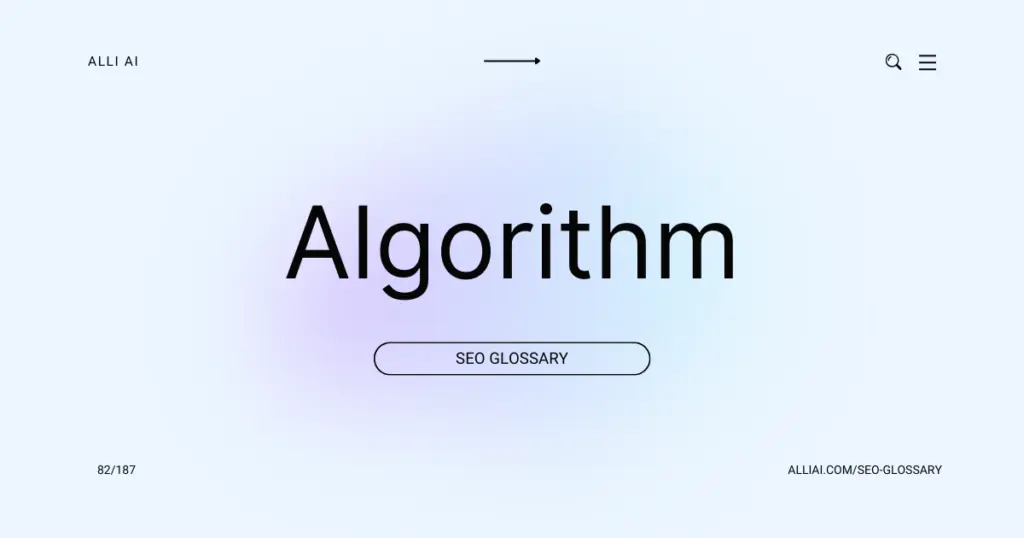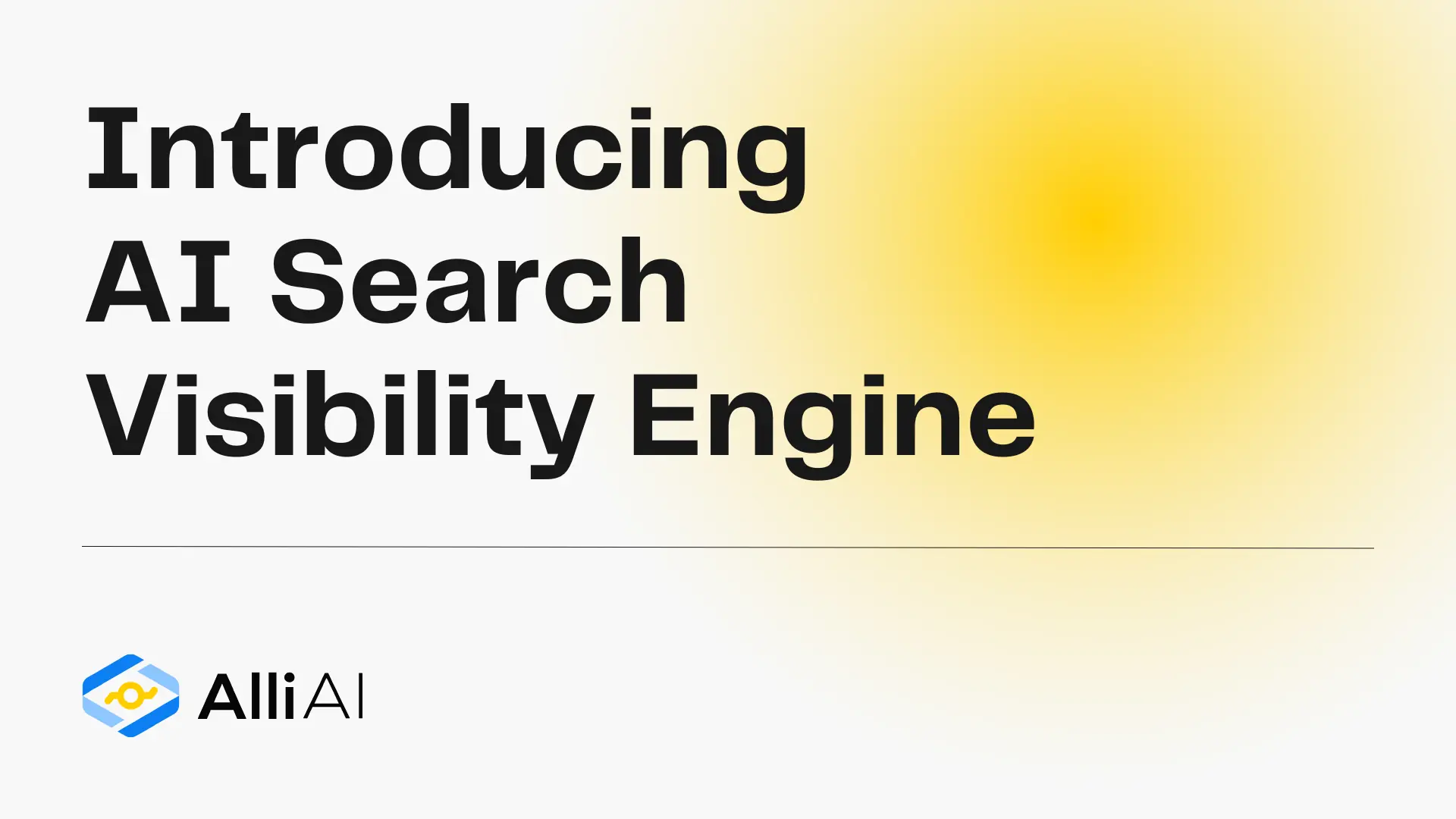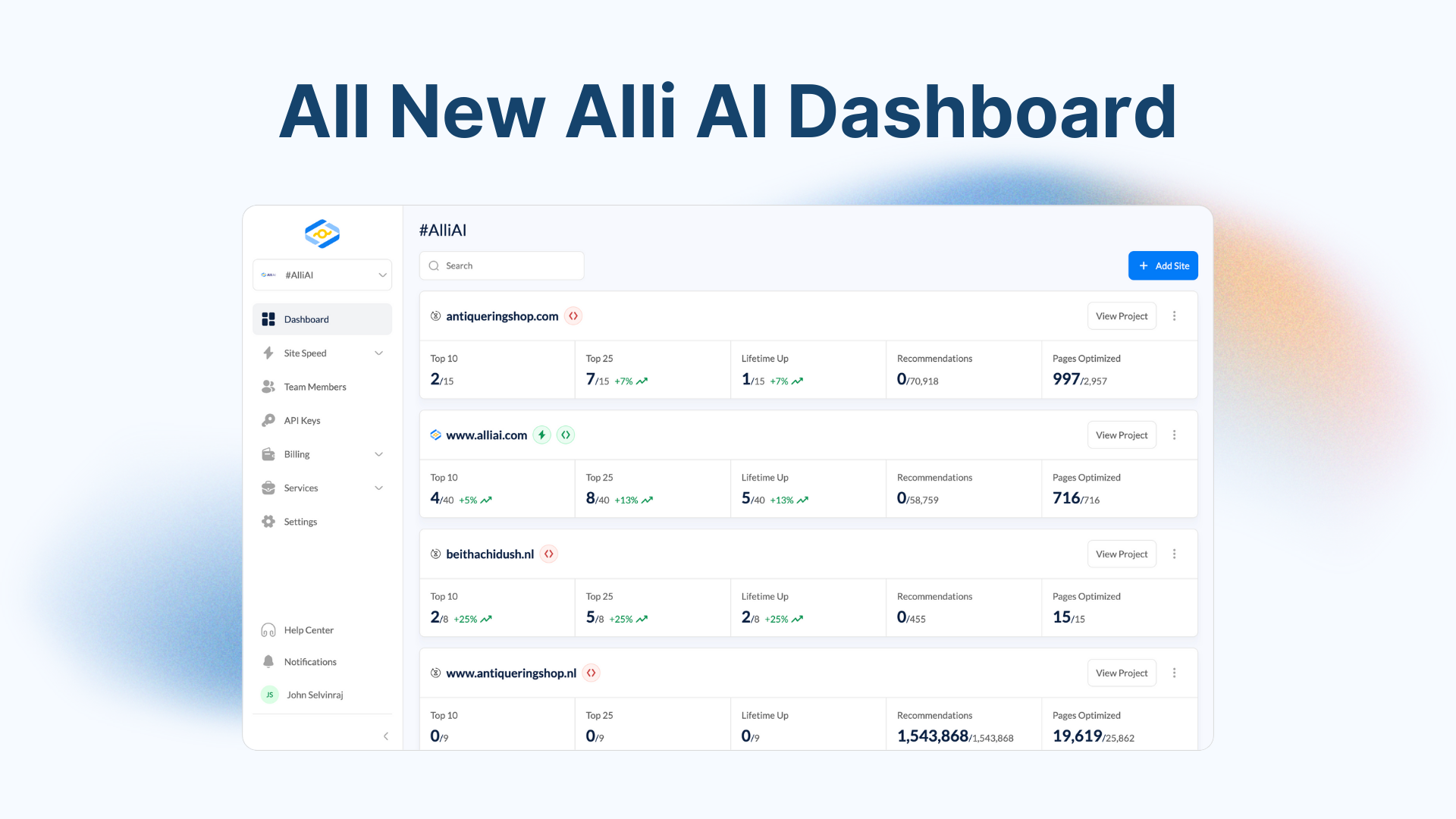What Does Algorithm Mean?
An algorithm is a set of step-by-step instructions or rules designed to perform a specific task or solve a particular problem. Think of it like a recipe in cooking that guides you through the necessary steps to achieve a desired outcome.
Where Does Algorithm Fit Into The Broader SEO Landscape?
Algorithms are the backbone of search engines, dictating how websites are indexed and ranked based on relevance, quality, user engagement, and other factors. In SEO, understanding these algorithms is crucial for optimizing websites to perform well in search results.
Search engines like Google use complex and continually evolving algorithms to evaluate the content and structure of a website. These algorithms consider various factors such as keywords, site speed, mobile-friendliness, backlinks, user behavior, and content originality. By understanding these factors, SEO professionals can tailor their strategies to improve ranking and visibility.
SEO strategies are developed to align with the algorithms’ criteria, which can involve technical SEO (site architecture, mobile optimization), on-page SEO (content quality and keyword optimization), and off-page SEO (building backlinks, social signals). Each aspect is influenced heavily by the current state and updates of search engine algorithms.
Constant updates to these algorithms mean that SEO practices must also evolve. For example, Google’s algorithm updates often focus on improving the understanding of user intent, the context of queries, and the overall user experience on websites. SEO specialists must stay informed about these updates and adjust their strategies accordingly to maintain or improve their rankings.
Moreover, understanding algorithms helps SEO professionals use analytical tools more effectively, decipher data trends, and make informed decisions to optimize websites in a way that aligns with how search engines assess and value web content. This involves continuous testing, learning, and adaptation to the intricacies of algorithm changes.
Real Life Analogies or Metaphors to Explain Algorithm
1. Recipe: An algorithm is like a recipe for cooking a dish. Just as a recipe provides step-by-step instructions on what ingredients to use and how to combine them to create a dish, an algorithm provides a step-by-step procedure for solving a problem or performing a computation.
2. Roadmap: Think of an algorithm like a roadmap for a road trip. If you need to go from one place to another, a roadmap guides you where to turn, which roads to avoid, and the quickest route to your destination. Similarly, an algorithm guides a computer through the steps needed to solve a problem or accomplish a task.
3. Knitting Pattern: An algorithm is similar to a knitting pattern. In knitting, you follow a specific pattern of stitches to achieve a desired design or garment. Similarly, an algorithm is a pattern of operations that perform specific computations to achieve an end result.
4. Music Sheet: Consider an algorithm as akin to sheet music for a musician. Just as sheet music directs which notes to play, in what order, and how to play them to re-create a musical piece accurately, an algorithm instructs a computer on what steps to take to complete a process or solve a problem.
5. Treasure Hunt: An algorithm is like the clues in a treasure hunt. Each clue helps you move closer to finding the treasure, dictating your next location as clearly as possible. Similarly, each step in an algorithm brings you closer to the solution of a computational problem, guiding you in the necessary sequence of actions.
How the Algorithm Functions or is Implemented?
1. Crawling: Search engines use bots to discover new and updated content by crawling web pages. These bots start with a list of URL addresses from past crawls and sitemaps provided by website owners.
2. Indexing: After a page is crawled, it’s stored in a giant database called an index, where it’s processed and analyzed for content, images, videos, and other media. The content is analyzed to determine the page’s topic and its quality.
3. Processing Queries: When a user inputs a search query, the search engine retrieves and categorizes relevant information from the index. This involves parsing the query to understand the searcher’s intent and the context of the query.
4. Ranking: The search engine ranks content based on various factors, including relevance to the query, page quality (determined by factors like backlinks, content quality, and user engagement), and user context (like location, device, and previous search behavior).
5. Search Algorithms: These algorithms apply hundreds of ranking factors and signal weighting to sort the best results for the user’s query. Each search engine may use different algorithms or updates to provide the most relevant results. Popular updates and algorithms include Google’s Panda, Penguin, and Hummingbird, each targeting different aspects of search like content quality, link quality, and query understanding.
6. SERP Generation: The ranked pages are then displayed on the search engine results page (SERP). This page may include not only traditional listings but also featured snippets, image carousels, maps, and other specialized content blocks.
7. User Feedback: User interaction with the SERPs (click-through rates, time spent on a page, bounce rates, etc.) is collected to refine and improve the algorithms, shaping future search results.
Impact Algorithm has on SEO
Google’s algorithms impact a website’s SEO performance, rankings, and user experience by prioritizing sites that offer high-quality, relevant content and user-friendly navigation. Websites that adhere to SEO best practices, such as using relevant keywords, obtaining backlinks from reputable sources, and ensuring fast page loading times, are typically rewarded with higher rankings in search results. Changes in algorithms can elevate or penalize websites, influencing organic traffic volume based on how well they align with the updated ranking criteria. Additionally, algorithm updates focus on enhancing user experience by demoting sites that use manipulative SEO techniques or provide a poor user experience. This encourages website owners to continuously improve their sites, ensuring they are accessible, provide valuable information, and offer a positive user engagement.
SEO Best Practices For Algorithm
1. Conduct comprehensive keyword research using tools like Google Keyword Planner, Ahrefs, or SEMrush to determine relevant and high-volume keywords.
2. Incorporate selected keywords into website elements:
– Page titles
– Meta descriptions
– Header tags (H1, H2, etc.)
– URLs
– Content body
– Alt text for images
3. Optimize website content for relevance and readability:
– Use short paragraphs and sentences.
– Include bullet points and numbered lists.
– Ensure content comprehensively addresses user queries.
4. Improve website structure:
– Create a logical hierarchy for information (sitemap).
– Use internal links to guide users and distribute page authority.
5. Enhance site speed:
– Compress images and videos.
– Minimize CSS, JavaScript, and HTML.
– Leverage browser caching.
– Upgrade to a faster web host if necessary.
6. Ensure the website is mobile-friendly:
– Use responsive design.
– Test the site on various devices.
– Improve buttons and navigational links for touch screens.
7. Set up and monitor Google Analytics and Google Search Console to track website performance and identify issues.
8. Implement structured data (schema markup) to help search engines interpret and display your content better.
9. Build high-quality backlinks:
– Guest blogging on reputable sites.
– Collaborating with influencers and industry leaders.
– Creating shareable content.
10. Regularly update existing content and add new, high-quality content that addresses user questions and current trends.
11. Optimize social media profiles and integrate social sharing tools on the website to increase visibility and traffic.
12. Address technical SEO:
– Fix broken links.
– Resolve crawl errors.
– Implement HTTPS for security.
– Use canonical tags to prevent duplicate content issues.
Monitor SEO performance using tools like Google Analytics and adjust strategies as necessary based on data-driven insights.
Common Mistakes To Avoid
1. Over-optimization: Stuffing keywords, excessively optimizing anchor text, or overly complex schema structures can trigger penalties or negative evaluations by algorithms. Avoid this by using natural language and improving user engagement rather than just focusing on SEO metrics.
2. Ignoring Algorithm Updates: Failing to stay informed about updates can render previous SEO strategies ineffective. Regularly check SEO news sources and adapt strategies accordingly.
3. Using Black Hat Techniques: Implementing tactics like cloaking, using private link networks, or doorway pages can result in severe penalties. Adhere strictly to search engine guidelines.
4. Poor Mobile Optimization: Given the mobile-first indexing, neglecting mobile-friendly design and optimization can hurt rankings. Ensure your site is responsive and mobile-user friendly.
5. Slow Site Speed: A slow-loading site can be penalized by algorithms or lead to high bounce rates. Optimize images, use content delivery networks, and streamline code for faster loading times.
6. Neglecting Local SEO: For businesses dependent on local clientele, failing to optimize for local search can miss significant opportunities. Use local keywords, maintain up-to-date listings, and solicit customer reviews.
7. Ineffective Use of Data and Analytics: Not using data to inform SEO strategies is a missed opportunity for optimization. Regularly analyze performance data to refine and adjust SEO tactics.
8. Duplicate Content: Content duplicated across multiple pages can be confusing to search engines and dilute keyword effectiveness. Use canonical links or differentiate the content to clarify the preferred pages for indexing.
9. Ignoring Social Signals: While not direct ranking factors, social signals can indicate content quality and relevance. Engage on relevant social platforms and encourage sharing of content.
10. Failing to Optimize for User Intent: Keywords should align with the intent behind search queries. Research and understand user intent, and craft content that solves users’ problems or answers their questions effectively.
11. Neglecting Security: Security issues can negatively impact a site’s trustworthiness. Ensure your site uses HTTPS and follow other security best practices to protect user data.
12. Inconsistent Content Creation: Irregular content updates can hurt SEO efforts. Develop and adhere to a consistent content creation schedule to keep your site fresh and engaging.
13. Poor Link Quality: Prioritizing quantity over quality of inbound links can lead to penalties. Focus on earning high-quality backlinks from reputable sources.
14. Failing to Optimize Images and Videos: Missed opportunities for image and video optimization can lead to poor user experiences and decreased SEO performance. Use appropriate file formats, compress where necessary, and use alt tags and descriptions.
15. Ignoring Structured Data: Not implementing schema markup can lead the website to miss out on rich snippets in SERPs, potentially leading to lower click-through rates. Use structured data to enhance listings.






